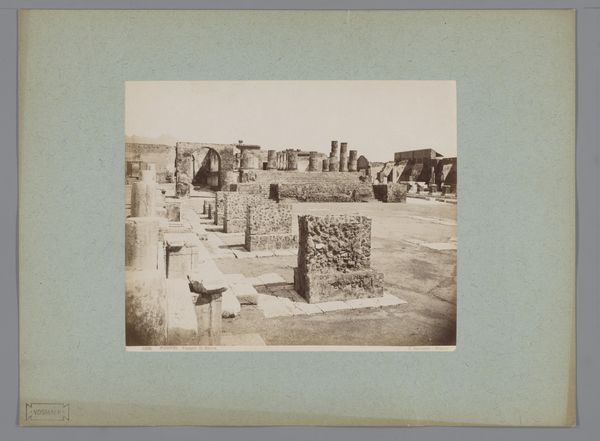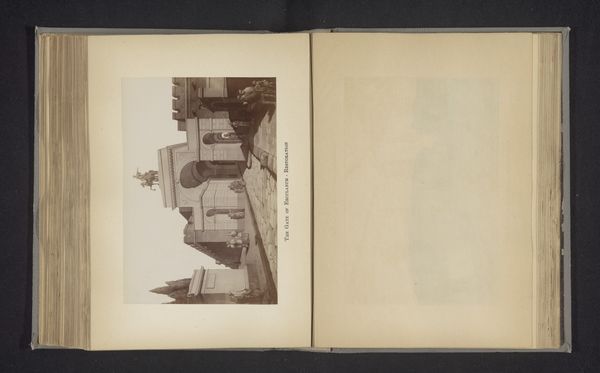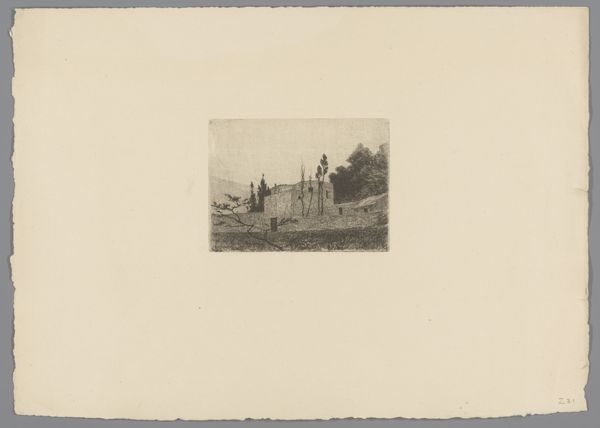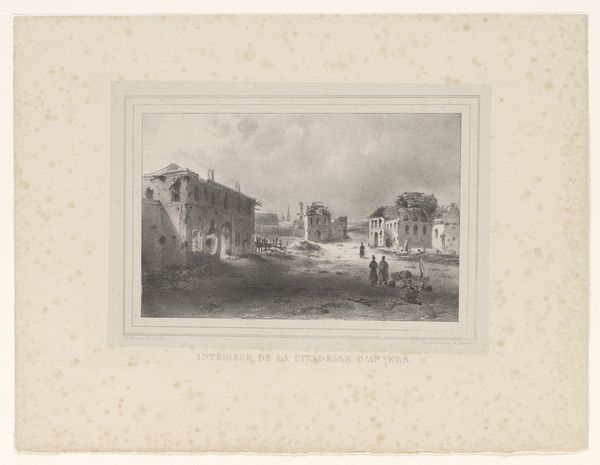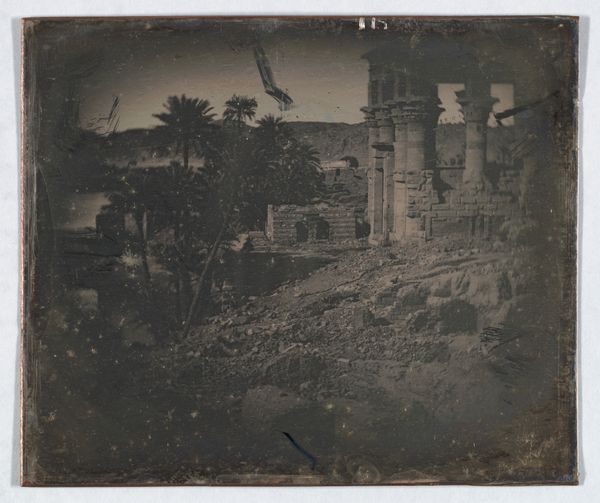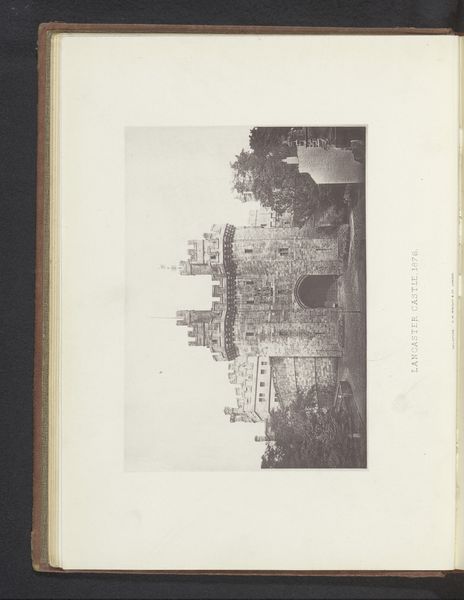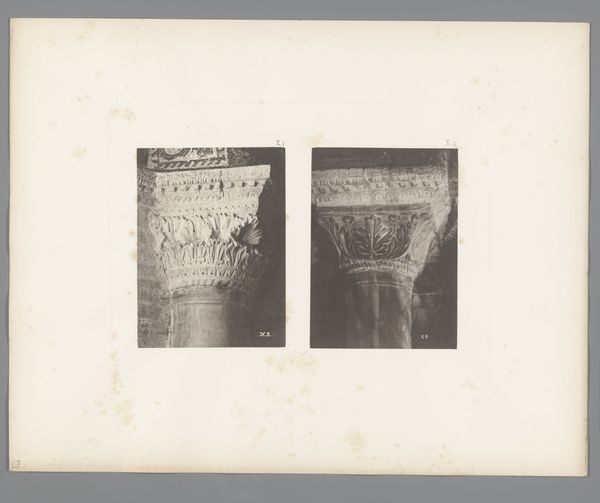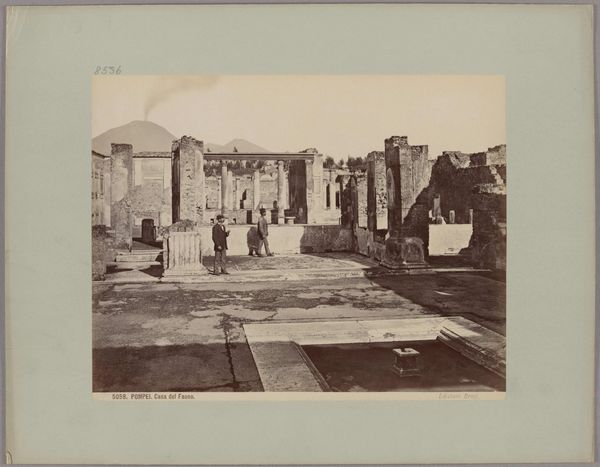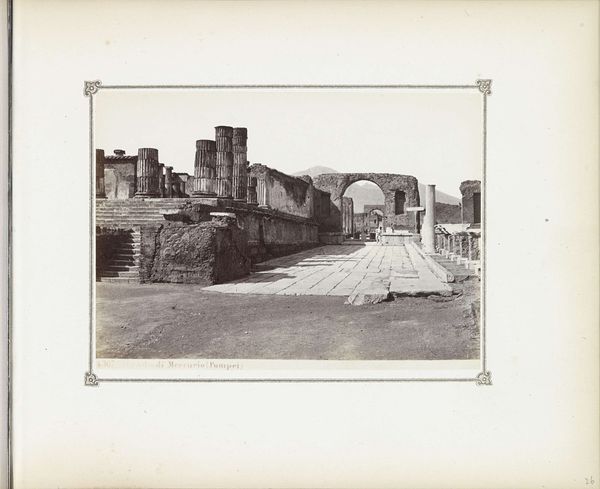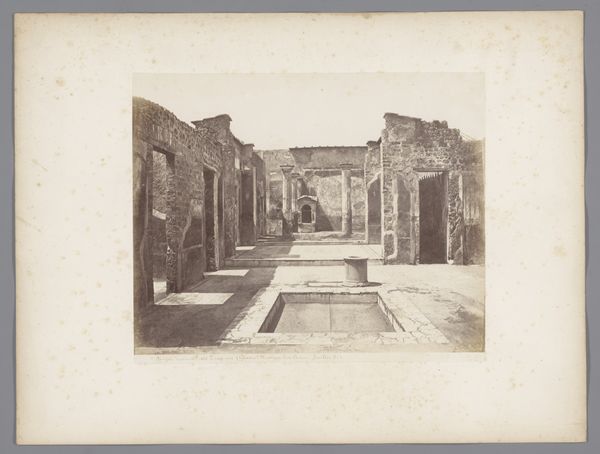
photography, gelatin-silver-print
#
photo of handprinted image
#
landscape
#
photography
#
ancient-mediterranean
#
gelatin-silver-print
Dimensions: height 171 mm, width 228 mm
Copyright: Rijks Museum: Open Domain
Editor: This gelatin silver print, "Via delle Tombe in Pompeii" by Giovanni Crupi, was taken sometime between 1865 and 1875. It’s haunting, this quiet road lined with ancient tombs. What do you see in this photograph? Curator: This image allows us to contemplate the layered nature of history and representation. Crupi's photograph, taken roughly 1600 years after Pompeii’s destruction, invites us to consider how the ancient world was being understood and consumed by a 19th-century audience. What social and political forces were at play in shaping those perceptions, and how did photography contribute to that process? Editor: So, it’s not just a record, but a constructed view? Curator: Precisely! This photograph becomes a form of visual colonialism, appropriating and framing the past through a European lens. Consider the selection of the subject: the “Via delle Tombe,” focusing on death and antiquity. What does that say about the 19th century's fascination with the ruins, and what might they have ignored? The image can prompt a reflection on power, privilege, and whose stories get told. Editor: I never considered how much the photographer’s perspective could shape the meaning, even with something that appears so objective. Curator: These images are never neutral. Consider the artistic choices made by Crupi—the angle, the lighting. These all shape our understanding. Whose gaze is privileged in this representation? Does this image reinforce certain colonial power structures? Editor: Thinking about it that way really changes how I see the image. Thanks for opening my eyes to the broader narrative surrounding it. Curator: Absolutely. Considering these images as documents deeply embedded in their time helps us examine contemporary issues about representation, heritage, and power.
Comments
No comments
Be the first to comment and join the conversation on the ultimate creative platform.
